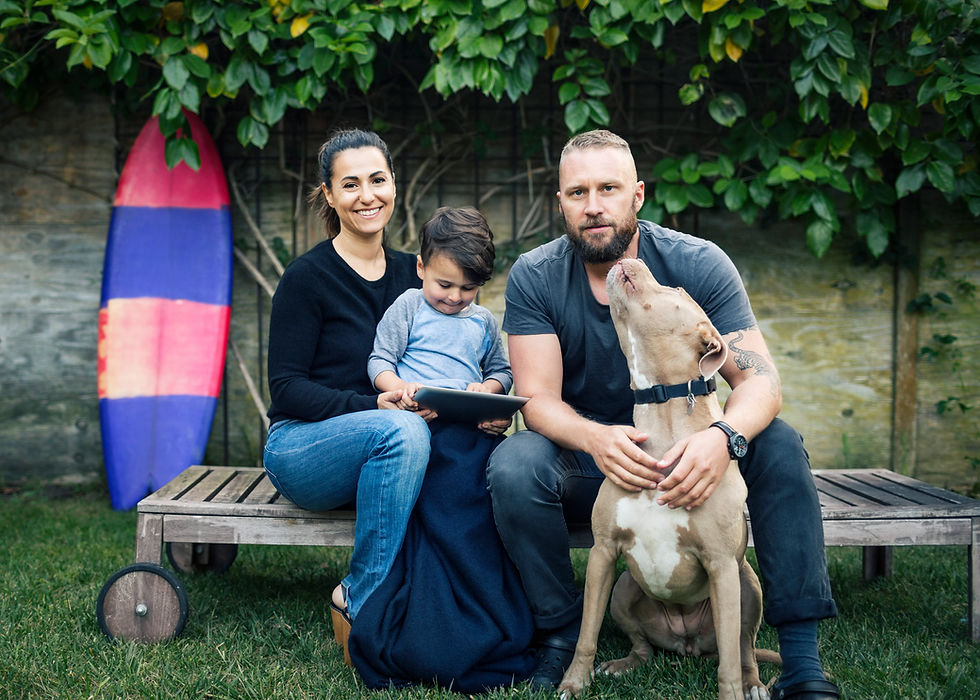How Therapy Dogs Provide Emotional Support
- The PATS Team

- Mar 24, 2025
- 4 min read
Updated: May 5, 2025
Therapy dogs have become essential companions for many individuals in various settings, offering emotional support and comfort during challenging times. These remarkable animals can sense human emotions and respond in incredible ways. In this blog post, we will explore how therapy dogs provide emotional support, the characteristics that make them effective, the training they undergo, and the criteria for becoming a therapy dog.
The Role of Therapy Dogs
Therapy dogs play a crucial role in different environments, including hospitals, schools, nursing homes, and disaster areas. They are trained to provide comfort and companionship, which can significantly improve people’s emotional well-being.
For instance, in hospitals, therapy dogs can help patients cope with pain and anxiety. Research has shown that interacting with therapy dogs can lead to lower stress levels and improved mood. Hospitals that integrate therapy dogs into their patient care practices often report faster recovery times and higher patient satisfaction.

In schools, therapy dogs assist students in coping with stress, anxiety, and social challenges. A study conducted by the University of California found that students who spent time with therapy dogs showed a significant decrease in anxiety levels. Many schools have incorporated therapy dogs into their counseling programs to provide students with a safe space to discuss their feelings.
How Therapy Dogs Help in Different Situations
The assistance that therapy dogs provide varies based on the setting. In nursing homes, they help alleviate feelings of loneliness and depression among elderly residents. Regular visits from therapy dogs create joy and engagement for residents, improving their overall quality of life.
Additionally, therapy dogs are often used in crisis situations, such as after natural disasters. Their presence can provide relief, comfort, and emotional support to those affected by trauma. Community organisations frequently deploy therapy dogs to help people after events such as fires or floods, assisting in the healing process.

In each of these scenarios, therapy dogs serve as non-judgmental listeners, offering companionship without expectation. Their calming presence can diminish feelings of fear or sadness, allowing people to process their emotions more readily.
What Disqualifies a Dog from Being a Therapy Dog?
Not every dog is suited for therapy work. Certain traits disqualify a dog from becoming a therapy dog. Firstly, a dog must have a stable temperament. Territorial behaviour or excessive fearfulness can hinder a dog from performing well in therapy roles.
Secondly, dogs must be trained to interact calmly in diverse environments. Distractions, such as loud noises or sudden movements, should not provoke anxiety or aggression. Thirdly, dogs should demonstrate good hygiene and health. Regular veterinary care is necessary to ensure that the dog does not carry any diseases that could be transmitted during visits.
It's also important that therapy dogs enjoy interacting with people. A dog that shies away from attention or does not seek companionship may not be the right fit for this role. The selection process for therapy dogs is thorough to ensure only the best candidates are chosen.
The Training Process for Therapy Dogs
Therapy dog training is an essential aspect of ensuring that dogs are suitable for their roles. This specialised training focuses on teaching the dogs to remain calm and behave appropriately in various environments.
Training typically includes basic obedience training, socialisation with different types of people, and exposure to various environments. Dogs learn to understand and follow cues, which helps them perform their duties confidently.
Prospective therapy dogs often undergo an evaluation process where professional trainers assess their temperament, behaviour, and geographical adaptability. Many organisations offer structured programs for therapy dog training, ensuring that handlers and their dogs receive the support they need to succeed.
If you are interested in learning more about how to prepare a dog for this important work, you can explore resources on therapy dog training.

Building a Strong Bond Between Dog and Handler
A successful therapy dog-handler team shares a strong bond built on trust and understanding. This connection is vital for providing effective emotional support to those in need. Handlers must spend time developing a close relationship with their dogs, thus enhancing the communication between them.
Handlers play a crucial role in creating an environment where the therapy dog's natural instincts can flourish. Regular training sessions, social outings, and volunteer experiences can help solidify their partnership.
Moreover, handlers must practice patience and consistency during training to ensure the dog feels secure and confident. This partnership not only benefits those receiving therapy but also enriches the lives of the dog and its handler.
Final Thoughts
Therapy dogs serve an invaluable role in today’s society. Their ability to provide emotional support helps countless individuals cope with life’s challenges. Training and selection processes ensure only the best candidates become therapy dogs, while strong handler-dog bonds bolster their effectiveness.
As awareness about the benefits of therapy dogs continues to grow, more individuals and organisations are recognising the importance of these remarkable animals. Whether in schools, hospitals, or disaster relief situations, therapy dogs are making a positive impact on emotional well-being, one wag at a time.









Comments